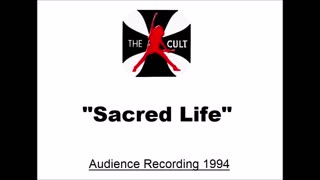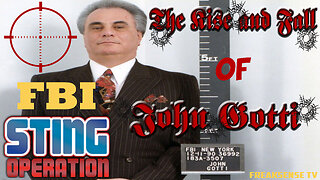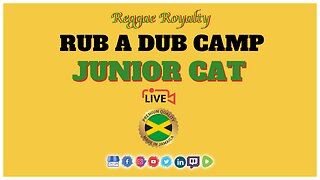Cia Run For Your Life Riot
C.I.A Album Restless Breed (1982)
Run For Your Life Album Fire Down Under (1981)
Restless Breed is the fourth studio album by American Band, Riot, released on May 21, 1982. It was the band's first record with vocalist Rhett Forrester.
Fire Down Under is the third studio album by Riot, released in 1981, it's the last album to feature original vocalist Guy Speranza.
In the late 70s, Riot were the Great White Hopes of American rock. But that was before the public ignored them, their label disowned them, and their singer quit. And then things got really bad…
Riot, a bunch of New Yorkers whose determination to succeed was exceeded only by their repeated failure to do so. Between 1977 and 1981, they released a string of albums that should have turned them into superstars, one of which – 1981’s Fire Down Under – remains one of the great hard rock records of the era.
What they didn’t have was the breaks. The Riot story has all the ingredients of a true heavy metal epic: the youthful dreams, the missed opportunities, the dogged perseverance, the repeated failures, the frustration, the farce, the bickering, the violence, the drugs… and the deaths of not one but three key members.
It’s Spinal Tap without the jokes; The Story Of Anvil without the happy ending. It’s a cautionary tale to anyone dreaming of rock’n’roll fame, and a reminder that for every band who make it, there are thousands who don’t.
“It’s just amazing that anything ever happened,” says drummer Sandy Slavin, who was a member of the band during their early-80s heyday. “When I played with Ace Frehley we’d be sitting on the bus and everybody would be telling you their music business horror stories. Mine was always just that little bit more horrifying."
“To be successful, you have to be a great performer, play the game and work with the press,” says Billy Arnell, who co-managed the band in the late 70s and early 80s. “Riot wasn’t that great at that stuff. They didn’t understand that being in the music business, a multi billion-dollar industry, took more than thinking like a Brooklyn kid.”
Former guitarist Rick Ventura – a man who lived through the worst parts of the story – puts it more bluntly: “Talk about a band with bad luck.”
After two false starts, Riot had at last made their masterpiece – the album that would book their place at rock’s top table. At least that’s what should have happened. Instead, Capitol refused to release it.
The official line was that the label deemed it ‘commercially unacceptable’ – too heavy for the climate of 1981. But Slavin suggests that the real reason was down to a failed power-play by Billy Arnell and Steve Loeb.
“There was a song by Rick called You’re All I Needed Tonight that our A&R guy liked,” says Slavin. “He said it was a big hit, and he took a tape to the executives in LA and played to them. Then Billy and Steve don’t put the song on the album – it was their way to put the A&R guy in his place. Of course, the A&R looks like an idiot. That’s when the label decided that it was ‘commercially unacceptable’.”
Whatever the reason, the knockback was disastrous for Riot. Arnell decided to go toe-to-toe with the label and get the fanbase involved. He sent out a postcard to all the fans on their mailing list, invoking their axe-wielding, seal-headed mascot: “Tior is held captive in the ivory tower by the maniacal company executives.”
He worked up a petition to get the album released, signed by fans and such high-profile supporters as Iron Maiden. The cause was picked up by the British music press, if not their American counterparts.
Rather than having the desired effect, the campaign only made things worse. Not only did Capitol refuse to release the album, they weren’t inclined to let Riot go. While things hung in limbo, Riot’s funds dried up. Cracks were growing between the co-managers and the members of the band who weren’t Mark Reale and Guy Speranza.
“The band’s money was cut off,” says Slavin, still fuming at the memory. ”I had to give up my apartment in New York, move back to New Jersey. It was fucked. Billy and Steve had kept the money [from the deal with Capitol], so they could have kept us going. Then they sold it to Elektra. They sold the fucking record [Fire Down Under] twice.”
It was Elektra Records, fired up by the enthusiasm of hotshot A&R man Tom Zutaut, who proved to be Riot’s saviours. The new label helped extricate Riot from their Capitol deal, and finally released Fire Down Under. To the relief of the band, it was a success, selling more than its two predecessors combined (it would eventually sell more than 500,000 copies in the US).
Yet Riot’s capacity for snatching defeat from the jaws of victory was unmatched, and once again their world was about to come crashing down around them. In November 1981, while supporting Grand Funk Railroad, Guy Speranza – whose nickname was Buddy – dropped a bombshell.
“Guy turns to me and Mark and starts talking in the third person,” recalls Slavin. “He says, ‘Hey you guys, Buddy’s packing it in.’ We thought he was joking, so we didn’t say anything. Then we get back to the hotel and he says, ‘I’m really quitting.’ He announces that he’s getting married and his wife-to-be doesn’t like rock’n’roll.”
In a career defined by terrible timing, this was the worst timing of all. The band had finally made their breakthrough, and now their frontman was walking away from it for love.
It soon became apparent that Forrester was a volatile and insecure character. He became prone to picking fights. Worse, he was unreliable, as the band found out on their first tour with him.
“We got to Nashville, and we hear that Rhett’s going to make a later plane, which is always a bad sign,” recalls Slavin. “Suddenly, there’s a call for our tour manager. He comes back and says, ‘Fellas, the tour is over – Rhett’s in the hospital.’” It transpired that Forrester had attended a Queen show at Madison Square Garden, and ingested something at the aftershow that saw him hospitalised for four days.
Riot’s run of bad luck didn’t stop with their initial split. On January 2, 1994, Rhett Forrester was shot and killed during a car-jacking in Atlanta.
“The police guess he was reaching for something in the glovebox and whoever was standing outside the car, probably selling him something, thought he was going for a gun and shot him in the back,” says Sandy Slavin. “Rhett then drives the car away and crashes it into a police car. That’s Rhett!”
On November 8, 2003, Guy Speranza passed away after being diagnosed with pancreatic cancer. In an interview, Mark Reale revealed that his wife believed this was related to the chemicals he handled every day for 20 years in his job as a pest controller.
Then, on January 25, 2012, Mark Reale died of complications from Crohn’s Disease, the crippling stomach ailment that he had been battling for most of his life. He was still flying the Riot flag, until his illness got too bad for him to continue. A week before Reale died, Rick Ventura turned up to jam with the current Riot line-up in New York.
“I planned on going down and surprising Mark,” he says, “but he was too sick to play. I miss Mark, and I miss Guy too.”
-
 11:54
11:54
FranklynJones
4 months agoMama Home By The Sea Genesis
77 -
 2:46
2:46
Save My Freedom with Michele Swinick
10 months ago#134 ARIZONA CORRUPTION EXPOSED: Sound of Freedom Jim Caviezel Calls Out The CIA For Trying To "Take Him Out" After The Passion Of The Christ Movie Was Released | HE ONLY FEARS GOD!
9291 -
 5:42
5:42
Classic Rock Live Music (High Quality Audio)
1 year agoThe Cult - Sacred Life (Live in New Haven, Connecticut 1994) Audience
321 -
 5:01
5:01
Classic Rock Music Foreigner Audio and Video
1 year agoLou Gramm - One Dream (1991) Shadow King
98 -
 1:04:27
1:04:27
Save My Freedom with Michele Swinick
10 months ago#137 ARIZONA CORRUPTION EXPOSED: LARA LOGAN On Diamond & Silk - CHILD SACRIFICE & SEX TRAFFICKING - Their Minds, Body & Souls - If YOU Continue To Do NOTHING, YOU'RE Just As Guilty As Those Who Commit The Crimes & Rapes!
607 -
 5:00
5:00
TruthStream with Joe and Scott
1 year agoFreedom Now! Now on Rumble!!
3.63K54 -
 4:15:03
4:15:03
FreakSense TV
6 months agoCharlie Freak LIVE ~ Get Gotti ~ The Incredibly True Story of the Gotti Sting Operation...
34.4K61 -
 42:16
42:16
Official Don Sinclair Reggae Vibes
1 year agoOfficial Reggae Exclusive at Rub A Dub Camp: Junior Cat Live In Jamaica Live Music Performance 🇯🇲
394 -
 2:58
2:58
Joey McNew
2 years ago $0.01 earnedLuke Bryan - Run Run Rudolph - Drums Only - 4K
358 -
 2:58
2:58
Joey McNew
2 years agoLuke Bryan - Run Run Rudolph - Drum Cover - 4K
240